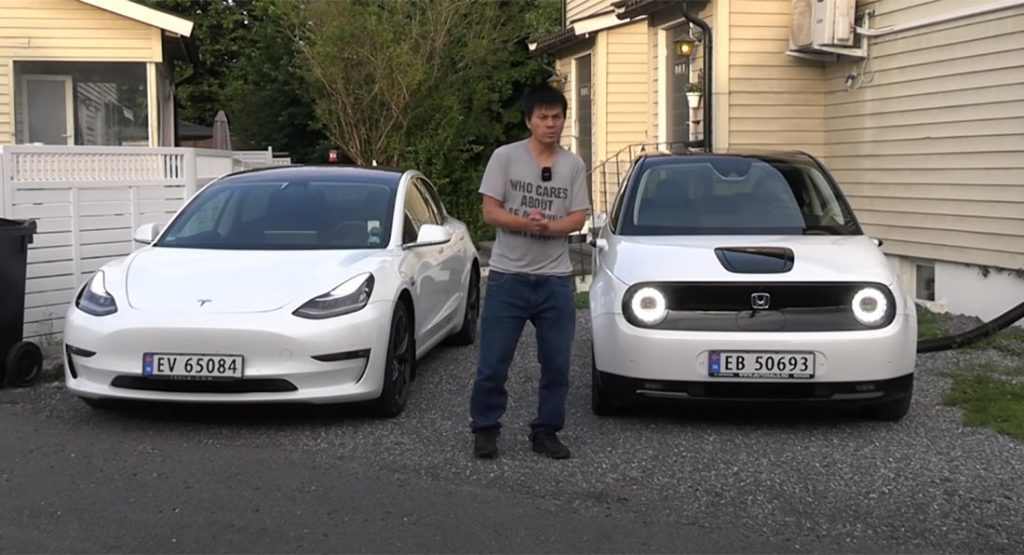If you just so happen to own a Model 3 and find yourself stranded with no access to a power outlet, it is actually possible to use another electric vehicle, namely the Honda e, to directly charge your Tesla.
Powering the Honda e is a compact 35.5 kWh battery pack, and interestingly, the EV features a full-size 1.5 kW house outlet in the center console that’s perfect for charging up devices like laptops that cannot be juiced-up via USB. As it turns out, the presence of this outlet also means you can charge a Tesla, as YouTuber Bjorn Nyland recently discovered.
Eager to test it out, Nyland used a charging cable capped at 6 amps to pull power from the Honda e at approximately 1.4 kW, just below the max of 1.5 kW where the fuse could be blown. Unsurprisingly, charging a Tesla via a Honda e isn’t very efficient.
Read Also: New Fiat 500e Vs. Honda E: Which Small, Trendy EV Would You Rather Have?
After charging the Tesla for 2 hours, the Honda e’s battery dropped from 94 per cent to 84 per cent, representing 2.9 kWh loss of energy capacity. By comparison, the Model 3 rose from 20.6 per cent charge to 23.8 per cent, meaning it added 2.2 kWh.
Fittingly, Nyland says this is simply a proof of concept and not something that is very practical.
In the future, vehicle-to-vehicle charging could become more commonplace. Rivian, for example, has revealed its models will provide vehicle-to-vehicle charging, although it remains to be seen just how efficient this process will be.



